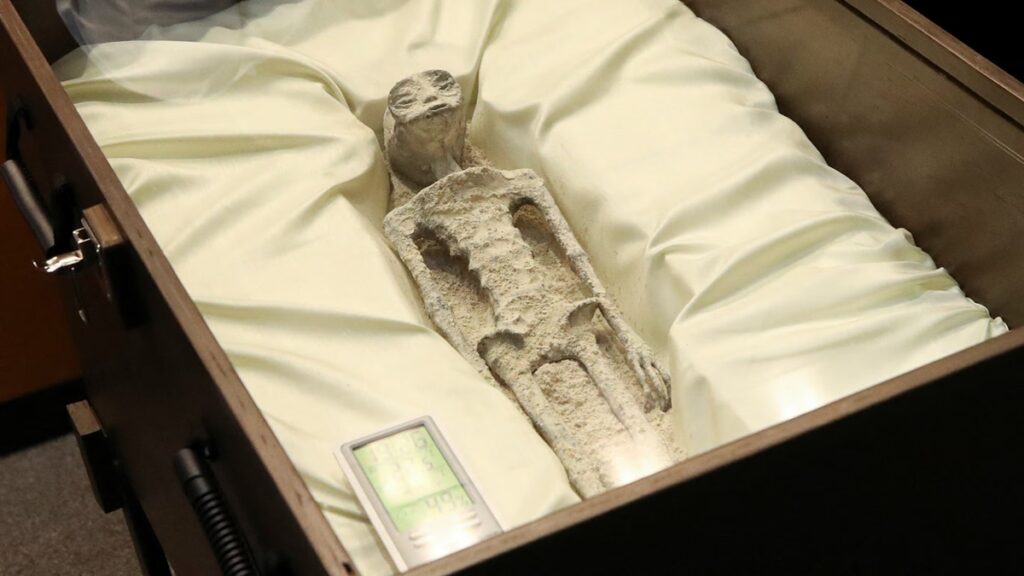1,000-Year-Old Corpses “Said Not to Be Human” on Display in Mexico!

1,000-Year-Old Corpses “Said Not to Be Human” on Display in Mexico!
At a congress in Mexico, 1,000-year-old corpses believed to be the bodies of aliens and not human beings were exhibited. Here are the details!
A unique event took place today in Mexico City, in the country’s congress. Led by journalist and ufologist Jaime Maussan, an official event was organized in the Mexican capital, where two alleged “alien corpses” were displayed.
The two small “non-human” bodies were displayed in boxes with windows for all to see. The small mummified specimens, recovered from the Peruvian city of Cusco, are believed to be a thousand years old. Scientists also hosted the event.
Bodies unearthed in Peru are said to have been fossilized in mines
Under oath, Maussan addressed members of the Mexican government and US officials and announced his findings. Maussan said the UFO samples were recently examined at the Autonomous National University of Mexico (UNAM), where scientists obtained DNA evidence using radiocarbon dating.
Although there have been claims that the bodies are those of aliens because they do not belong to a human being, the Mexican government disagrees.
At the event, Maussan said, “These samples are not part of our terrestrial evolution. These are not beings found after a UFO wreck. They were found in diatom (moss) mines and later fossilized.”

What do you think about this subject? Please share your thoughts with us in the comments section below.






